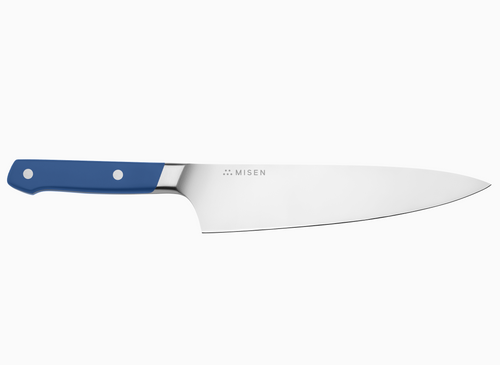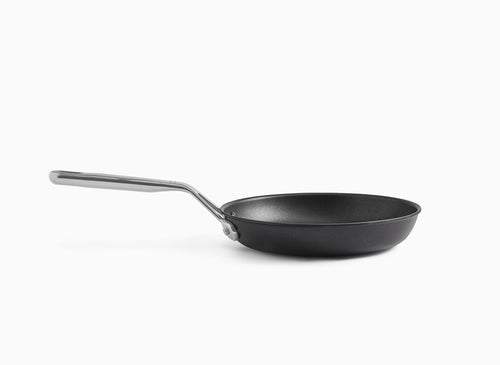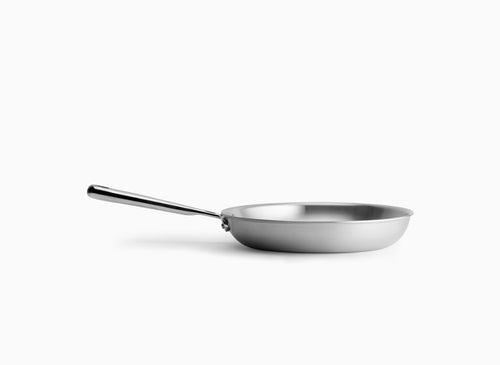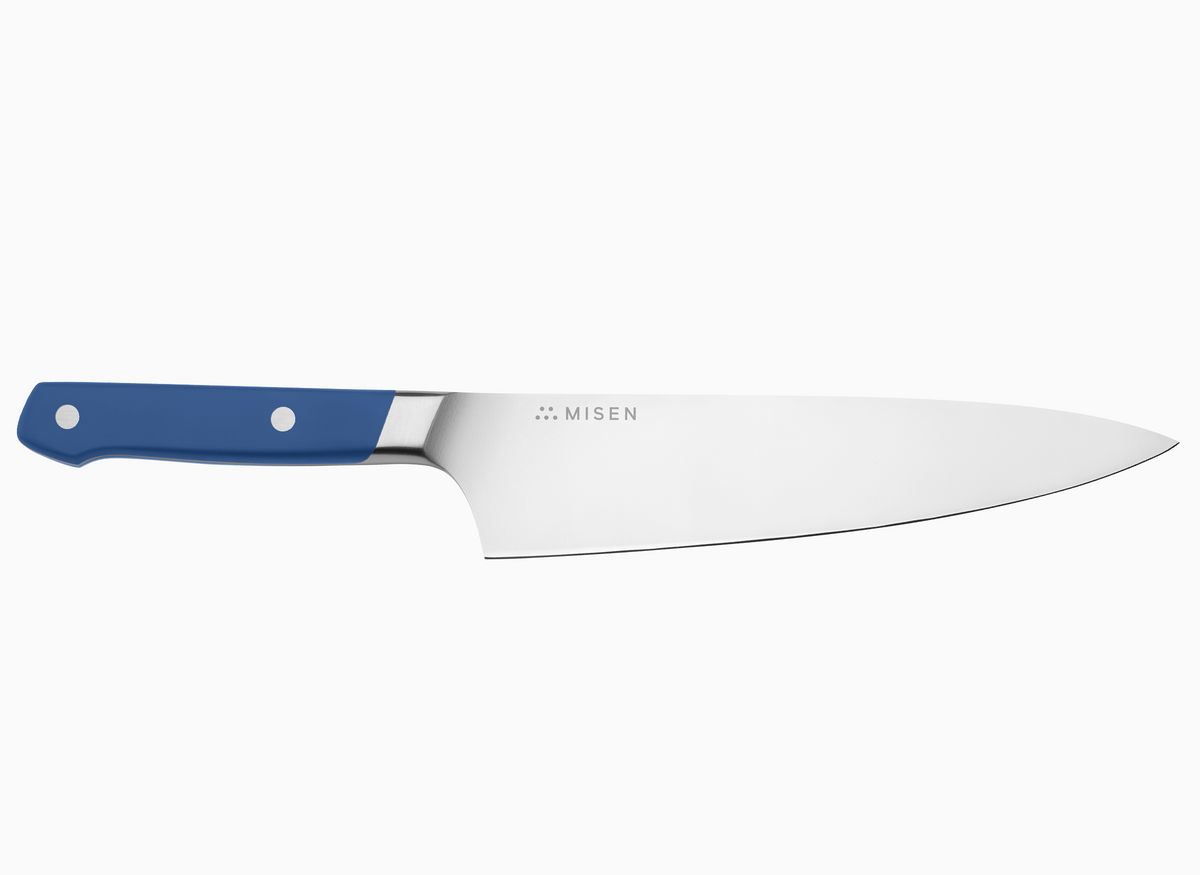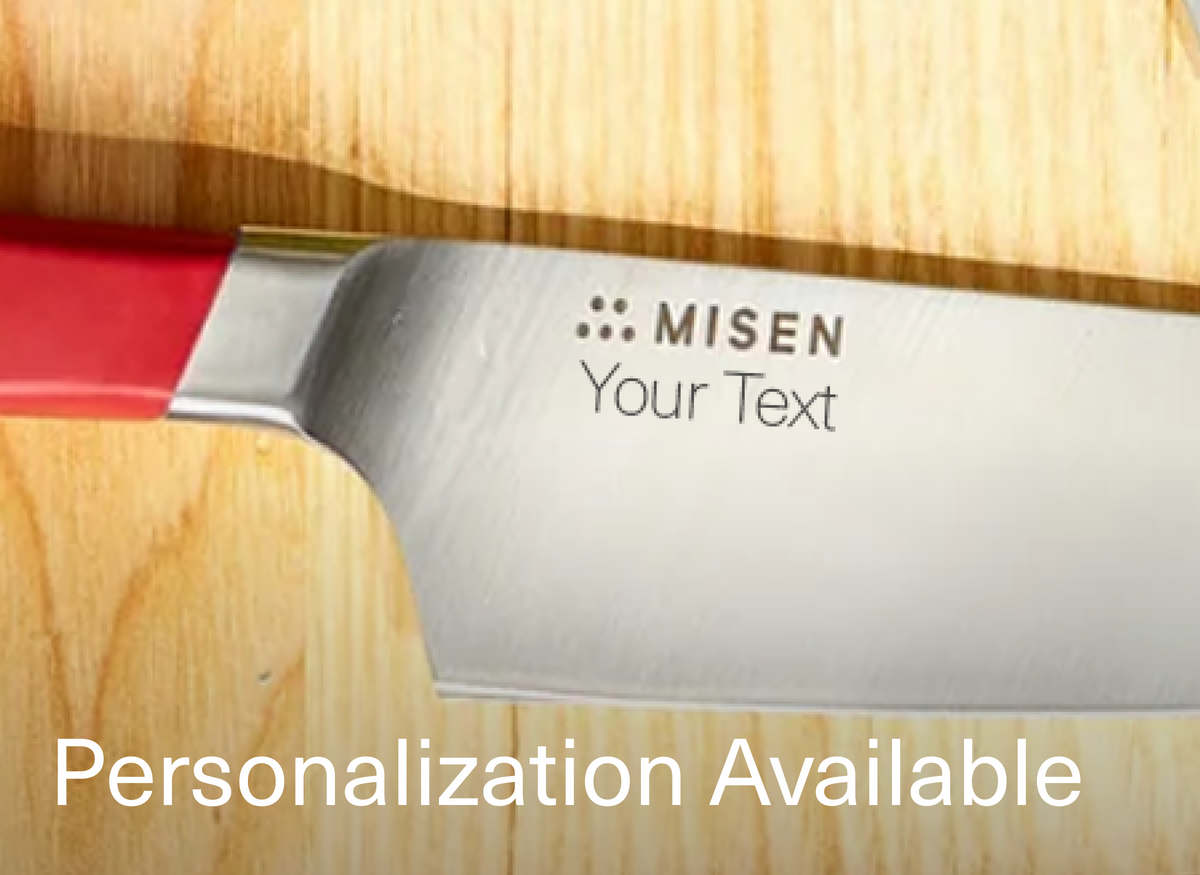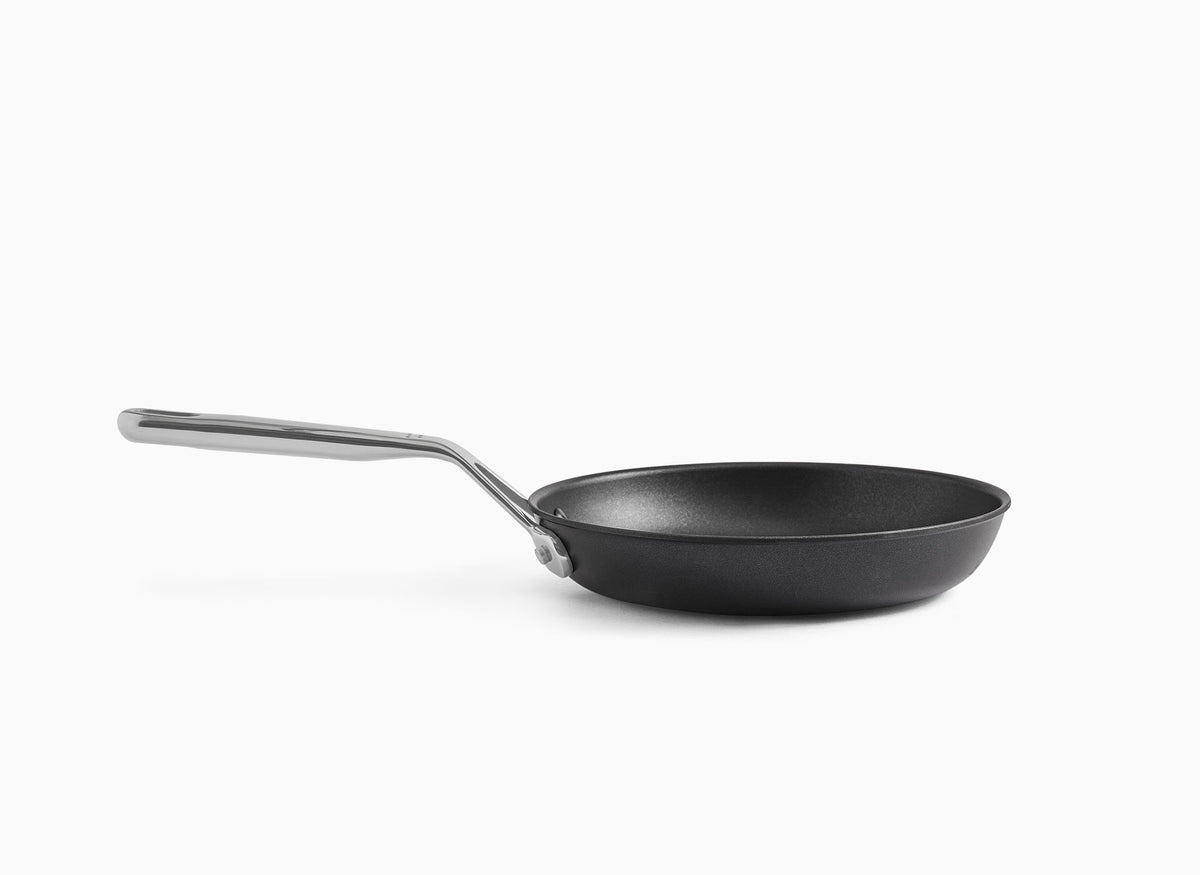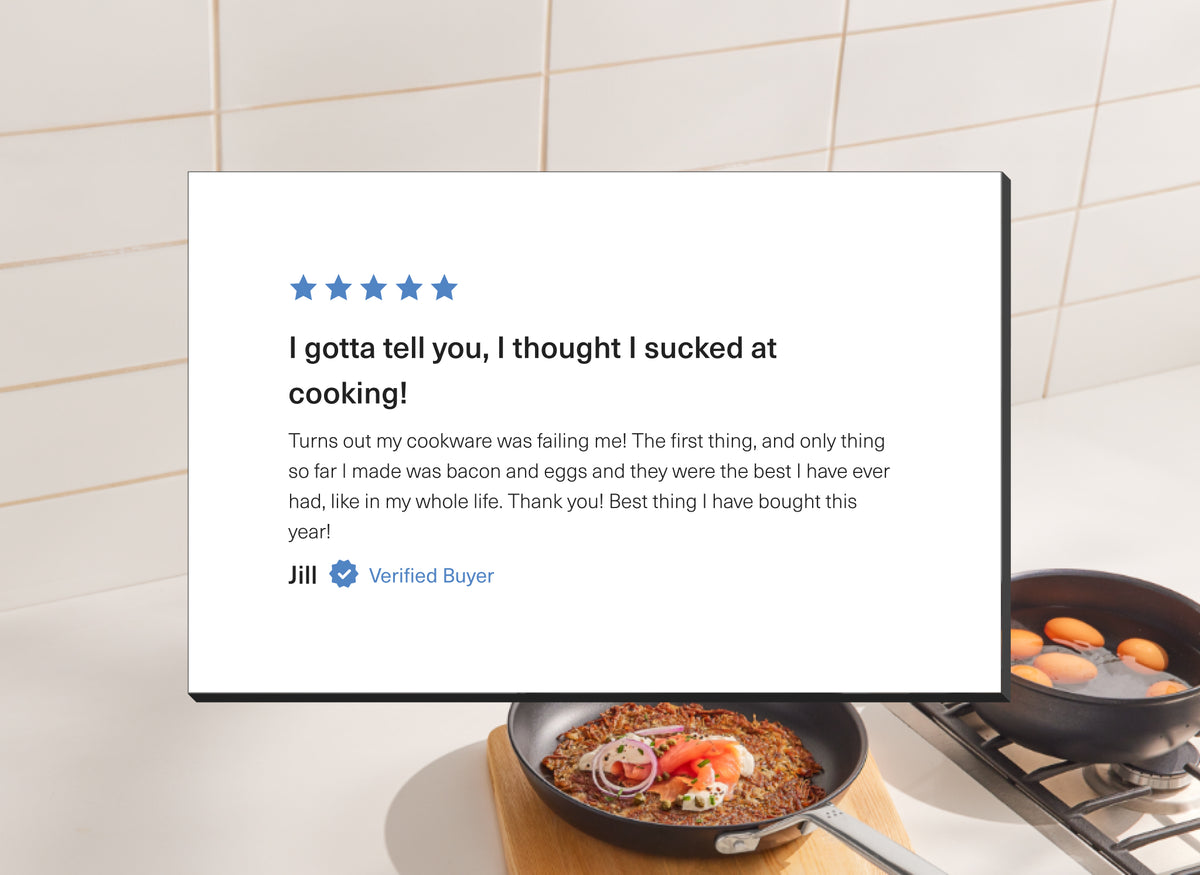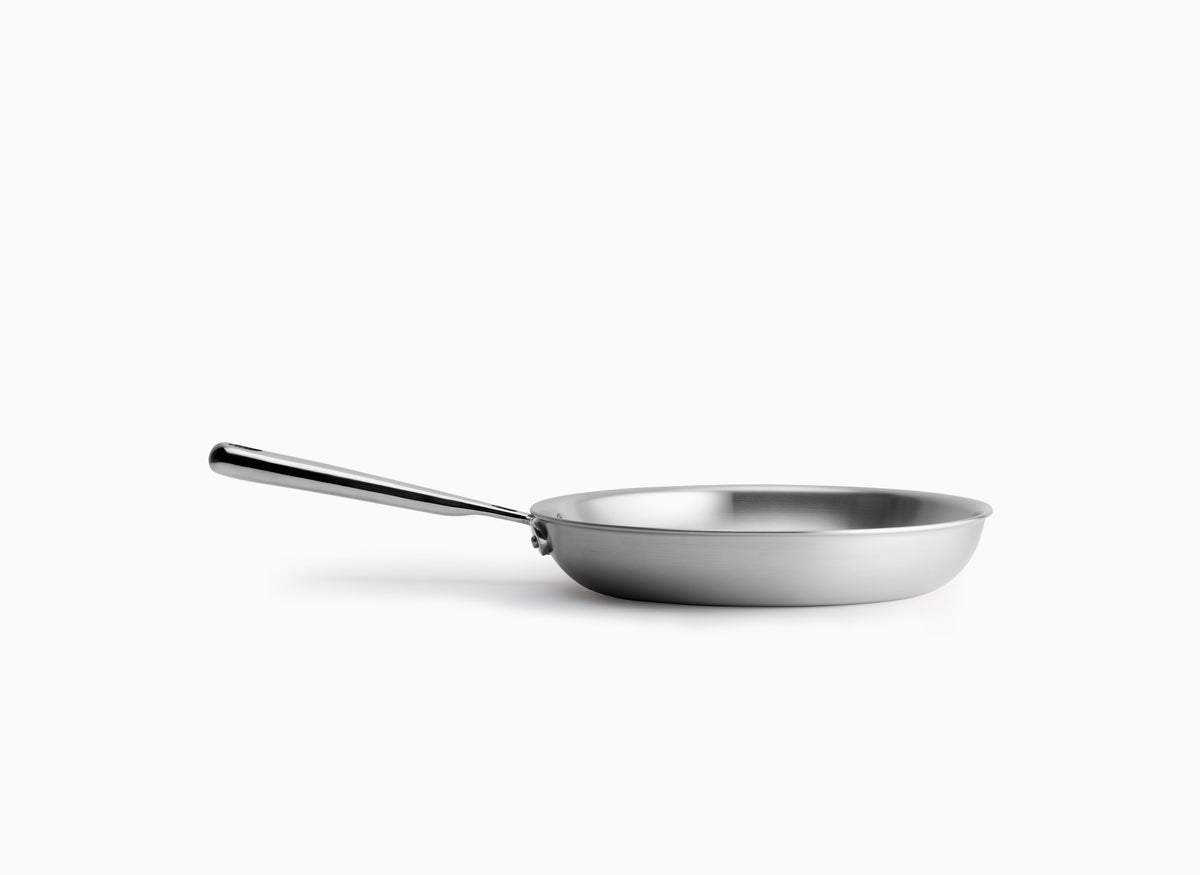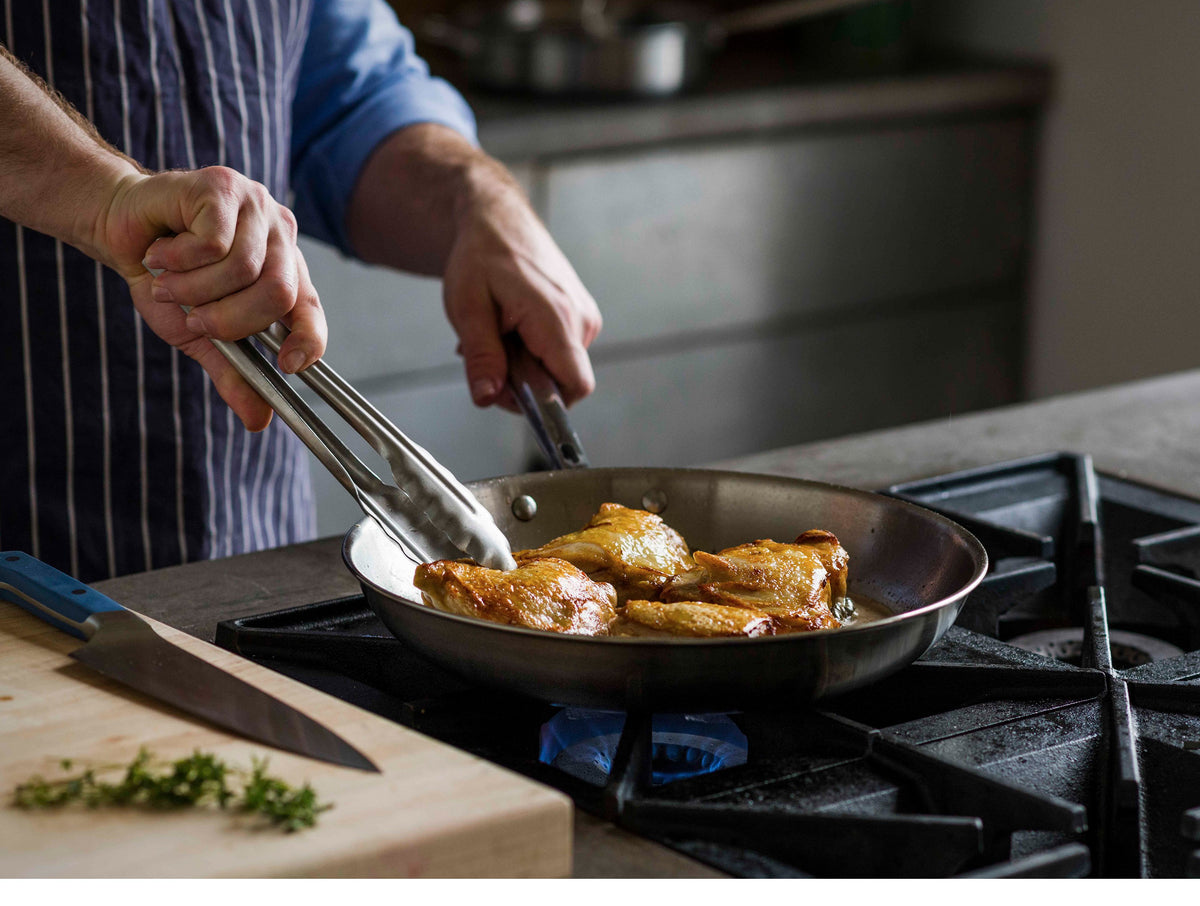How to Clean a Burnt Pan in a Few Simple Steps
 Burnt pans are a common occurrence in all kitchens and can be cleaned with just a few simple items.
Burnt pans are a common occurrence in all kitchens and can be cleaned with just a few simple items.
- A simple scrub with warm, soapy water and a non-abrasive pad is usually enough to take care of everyday grime.
- When cleaning cookware, always start with the gentlest method and refer to the manufacturer’s manual for further instructions.
- If soap and water don’t work, try boiling water in the pan over medium heat to help loosen up the leftover stuck-on bits.
It's a common trait of cooking — a dish that's hearty in flavor is also hard to cleanup. With so many recipes calling for high temperatures and long cooking times, it's normal for cookware to get a little charred here and there.
In fact, a few high-level techniques even make use of this burnt flavor. Deglazing, for instance, uses the browned bits left behind from cooking (referred to as “fond”) to create a rich pan sauce. Socarrat is the caramelized crust at the bottom of paella, heralded as the best part of the rice dish.
The more flavor you want, the longer you have to leave a dish to simmer, stew, and sear onto the pan. But don’t let the thought of burnt pots and pans stand in the way of some amazing fare. There are a number of ways to get your cookware gleaming again — with just a few household items already in your pantry.
For Everyday Grit and Grime
With all the available cookware constructions — stainless steel, high carbon steel, non-anodized aluminum, ceramic — it can get a bit daunting when it’s time to do the dishes.
Thankfully, most quality pots and pans these days can be cleaned with a gentle scrub of warm, soapy water and a soft sponge. If there’s still a bit of food left stuck on the surface, try a mildly abrasive cleaner. (Bar Keepers Friend is a good choice.)
If you’re working with stainless steel pans, you can put them in the dishwasher for easy cleanup. But keep your nonstick and cast iron pans away from the dishwasher.
No matter what the material, it’s best to use a sponge, non-scratch scouring pad, or firm brush. Avoid steel wool or other metal pads, as these can scratch and damage all forms of cookware.
If you’re still unsure about which cleaning method to use, a good rule is to start with the gentlest one and move on to something stronger only if needed — and as always, look to the manufacturer’s care and cleaning instructions for further guidance.
For Removing Burnt Bits
There’s a little known rule that you shouldn’t actually remove your pan from the stove until it’s already clean. This runs counterintuitive to all our kitchen sensibilities — countertops are for cooking, sinks are for cleaning.
But before you toss that pan straight in the sink, consider the following: After cooking, most people leave their pans to cool with all the burnt food bits and drippings in place. So what was once soft and liquidy ends up as a dark, gunky chunk.
Why not save your kitchen sponges and arm strength by cooking the food straight off? The same deglazing method mentioned earlier, normally used to turn the fond into a savory sauce, can also dissolve it for easy cleanup.
This method works great for stainless steel, ceramic, or enamel cookware, but is not to be used with nonstick pans.
With the stove turned on high and the cooking surface hot (either immediately after cooking or from reheating), pour in enough water to completely cover the surface. You can also add some dish soap if you’d like.
Once the fond starts to loosen, use a wooden spoon or silicone spatula to gently pick at and scrape it from the bottom of the pan. Be careful you’re not hit by any hot steam or splatter as you work. Continue scraping and adding warm water as needed until the majority of the surface is clean. When done, turn the heat off and drain the pan, throwing out any of the charred remains. Wash as normal.
For Removing Really Burnt Bits
 An overnight soak or quick deglazing can help soften really burnt-on food bits from most metal pans.
An overnight soak or quick deglazing can help soften really burnt-on food bits from most metal pans.
For the next step up in the deglazing method, swap the water for white vinegar and baking soda. These two ingredients are amazing, multi-purpose cleaners, and work to remove both food and stains that stick to the cooking surface. While these work for stainless steel, ceramic, and enamel, baking soda is alkaline-based and not recommended for use on aluminum. Even with other metals, it’s best to use sparingly.
The key here is to apply the vinegar and baking soda separately — you don’t want to create a fizzy eruption.
Start by pouring equal parts of vinegar and water (i.e., one cup of vinegar and one cup of water) into the pan. Bring to a boil and use a wooden spoon or silicone spatula to scrape away as much of the stuck-on fond as possible. Remove the pan from the stove and pour out all the liquid.
Then, with the pan on a stable work surface, add a tablespoon of baking soda to the burnt area. You can also make a paste by mixing in a little bit of warm water. Use a sponge or non-scratch scouring pad to gently scrub the baking soda onto the surface. This will help lift any remaining stains. Keep working on any specific spots, rinsing and repeating until the surface is nice and clean.
For Everything Else
Sometimes, a burnt pan will need more than a few hours. In these cases, add some boiling water and a few drops of dish soap, and let the pan soak overnight (except for uncoated cast iron).
The next day, drain out the soapy water and proceed with any of the above methods — a gentle scrub, vinegar and baking soda, etc. Keep in mind, you may have to repeat the cleaning process a few times for particularly stubborn debris.
A Note About Nonstick and Cast Iron
 Nonstick and cast iron cookware are usually easier to clean, requiring just a quick scrub with soap and water.
Nonstick and cast iron cookware are usually easier to clean, requiring just a quick scrub with soap and water.
Caption: Nonstick and cast iron cookware are usually easier to clean, requiring just a quick scrub with soap and water.
As for nonstick or unlined cast iron cookware, a little bit of mild soap and a non-abrasive pad should do the trick. Do not use an abrasive cleaner on a nonstick surface, as the coating can easily be scratched off.
Cast iron, in particular, should not be left wet for too long. A brief rinse under running water is fine, but soaking cast iron overnight is a recipe for rust. Always make sure to dry the surface immediately and completely after cleaning, using a soft dish towel or paper towel.
Alternatively, you can heat the pan over a medium flame and let it sit until the water completely evaporates, which takes about 5 minutes. Let it cool, wipe out one more time, and season the surface with a light coat of vegetable oil before placing it in storage.
Cleaning Up Your Act
The scorched, blackened bottom of a pan is never a pretty sight, especially when you’re the one who has to clean it. Fortunately, it doesn’t have to be a labor-intensive ordeal or require a ton of expensive commercial cleaning products. Armed with a few cleaning tips, a little elbow grease, and some household basics, your cookware will be as good as new in no time.
